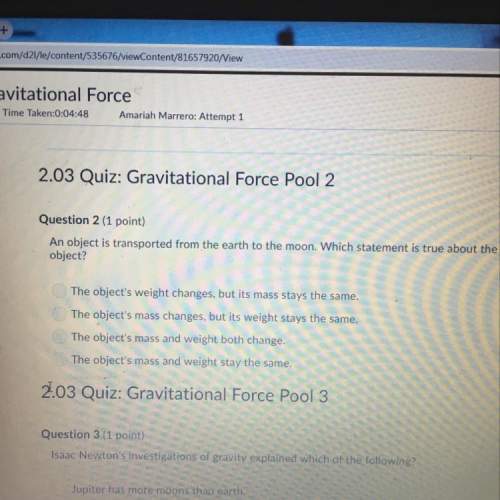
Chemistry, 04.05.2020 23:12 michaela134
When a reaction is reversible, eventually the rates of the forward and reverse actions will be equal. Which of the following best explains what this means? (3 points)
Select one:
a. The concentrations of the reactants and products have become equal.
b. The concentrations of the reactants have become constant.
c. The concentrations of the reactants have not reacted well.
d. The concentrations of the reactants have completed their reaction.

Answers: 1


Other questions on the subject: Chemistry

Chemistry, 22.06.2019 08:30, dyanaycooper13
Analyze how limestone is weathered and identify the features that are formed as a result of this dissolution
Answers: 1

Chemistry, 22.06.2019 23:00, tovarclaudia055
What does a numerical subscript following an element in a chemical formula mean?
Answers: 1

Chemistry, 23.06.2019 07:00, bree6754
Achemist who studies water samples did a demonstration of how to test for lead in water. she added a clear solution of potassium iodide to a clear solution of lead nitrate. then a yellow swirling solid formed in the liquid. what is most likely true about the yellow solid?
Answers: 3
You know the right answer?
When a reaction is reversible, eventually the rates of the forward and reverse actions will be equal...
Questions in other subjects:





Business, 22.09.2019 23:10




History, 22.09.2019 23:10

Social Studies, 22.09.2019 23:10




